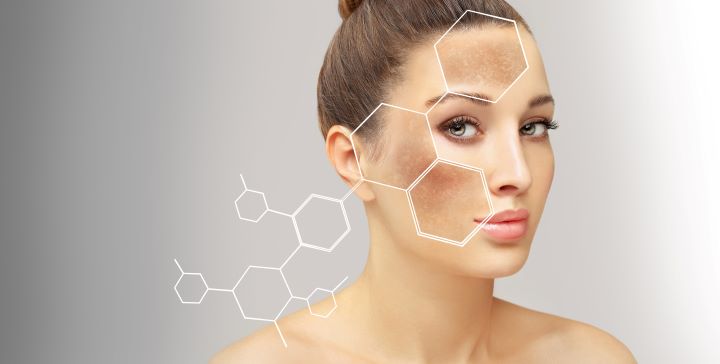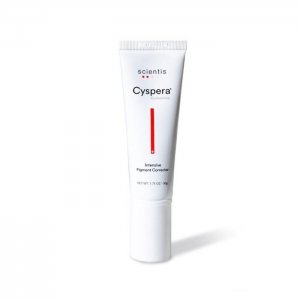Hyperpigmentation can impact just about anyone, and while the appearance may not be ideal, the good news is there are many treatment options available to improve the appearance of the skin when hyperpigmentation occurs. According to Dr. Megan Lent of U.S. Dermatology Partners in Chillicothe, Missouri, “Many people don’t like the way that hyperpigmentation makes them look, but dermatologists can help treat and prevent hyperpigmentation to keep you looking and feeling your very best. Don’t hesitate to schedule an appointment with your dermatologist if you’re worried about the appearance of hyperpigmentation or you want to ensure that areas of hyperpigmentation are not a more serious condition.” In this blog, Dr. Lent will review the types and causes of hyperpigmentation as well as treatment options.
What Is Hyperpigmentation?
Rather than one specific skin condition, hyperpigmentation is a term used to describe a variety of conditions that cause the skin to darken. According to Dr. Lent, “Hyperpigmentation is a portmanteau, a combination of two words. ‘Hyper’ means excessive or beyond the norm. ‘Pigmentation’ means coloring. So, hyperpigmentation is just that. It means excessive coloring. This may happen for many reasons, but the outcome is the same – darker patches of skin.”
The development of darker areas of skin occurs when melanin, the pigment-producing parts of skin cells, increases. Hyperpigmentation can occur on any part of the body. It may cause small patches of skin to darken or cover large areas.
What Causes Hyperpigmentation?
The main underlying cause of hyperpigmentation is the excessive production of melanin. This may occur for a variety of reasons. Like many skin health concerns, sun exposure is the most common cause of hyperpigmentation. Other causes of and risk factors for hyperpigmentation include:
- Changes in hormone levels that are most common during the teen years, pregnancy, and while using oral contraceptives
- Certain health concerns like thyroid disease and Addison’s disease that are related to hormonal shifts can also lead to hyperpigmentation
- Taking medications that increase light sensitivity, including some chemotherapy drugs
- Burns, cuts, bruises, and other wounds
Are there Different Types of Hyperpigmentation?
Several different skin conditions can lead to hyperpigmentation. Typically, these conditions are placed into one of two categories: localized and diffuse hyperpigmentation. Localized hyperpigmentation means the condition is almost entirely related to the skin with little to no underlying health concerns contributing to the condition. Diffuse hyperpigmentation is connected to an underlying health condition that needs to be treated to improve the appearance of hyperpigmentation.
Types of localized hyperpigmentation include:
- Sunspots – Also known as liver spots or solar lentigines, these areas of hyperpigmentation are caused by sun exposure. They can develop anywhere, but they most frequently develop on areas like the face, hands, and neck that receive the highest levels of sun exposure.
- Post-inflammatory hyperpigmentation – This type of hyperpigmentation occurs as a result of injuries like burns, cuts, and bruises. It may also develop in response to breakouts and flare-ups in chronic skin conditions like acne, eczema, and psoriasis. Additionally, this form of hyperpigmentation can also occur as a result of intentional skin damage like tattoos, piercings, or surgeries.
- Melasma – UV damage, hormonal shifts, and taking certain medications can all contribute to the development of melasma, but the symptoms of this condition are primarily related to skin health.
Types of diffuse hyperpigmentation:
- Metabolic disease-related hyperpigmentation – This type of hyperpigmentation occurs as a result of metabolic conditions. Vitamin deficiency is one of the most common forms of metabolic disease that leads to hyperpigmentation. In these cases, treating the vitamin deficiency may improve the appearance of the skin.
- Medication-related hyperpigmentation – Antimalarials, tetracycline antibiotics, chemotherapy, and even over-the-counter medications like NSAIDs have been related to hyperpigmentation. In most cases, adjusting the medications will be the first step in diminishing the appearance of hyperpigmentation.
- Hormonal pigmentation – Shifting hormone levels can lead to the darkening of certain areas of the skin. Hormonal shifts may be related to aging, pregnancy, taking oral contraceptive medications, or health conditions like Addison’s disease or thyroid disease.
Is Hyperpigmentation Harmful?
According to Dr. Lent, “While your skin may have darker spots, these areas of hyperpigmentation aren’t usually anything you need to be concerned about. Even though the vast majority of hyperpigmentation cases aren’t serious, hyperpigmentation can be a warning sign of more serious skin conditions, including melanoma and other types of skin cancer. For this reason, it’s important to have any new areas of hyperpigmentation examined by a dermatologist.”
How Is it Treated?
When it comes to treating hyperpigmentation, Dr. Lent says, “As long as hyperpigmentation is not related to a more serious skin condition, the good news is, it doesn’t have to be treated. However, if you prefer to lighten the areas of hyperpigmentation, there are several treatment options available.” Some common treatments for hyperpigmentation include:
- Topical medications – Prescription and over-the-counter topical creams and medications may be used to lighten skin. Prescription medications often contain hydroquinone and are not recommended for frequent or prolonged use as this ingredient can cause skin darkening with long-term use. Instead, over-the-counter products are much more likely to be utilized.
- Corticosteroids – When inflammation is a factor in causing hyperpigmentation, corticosteroids may be an important part of the treatment plan.
- Microdermabrasion – An abrasive material is used to remove the outer layers of skin and reveal healthier layers of skin below.
- Microneedling – This treatment creates numerous micro-injuries to the skin to jump-start the skin’s natural healing processes, leading to improved appearance, skin tone, and texture.
- Chemical peels – Chemicals are applied to the surface of the skin to remove the outer layers and reveal healthy, new skin below.
- Laser therapy – High-intensity light waves (lasers) are used to break down pigment in the skin, allowing the body to remove these darker skin cells and replace them with new, healthy skin below.
Additionally, dermatologists will likely walk patients through preventive measures that will help to minimize the risk for hyperpigmentation, including:
- Minimize time spent in the sun
- Use a broad-spectrum sunscreen with an SPF of 30 or higher each day
- For diffuse forms of hyperpigmentation, it’s important to address the underlying condition
- Manage chronic skin conditions like acne, psoriasis, and eczema to avoid hyperpigmentation related to skin inflammation
Visit a Trusted Professional at U.S. Dermatology Partners
Whether you need help diminishing the appearance of hyperpigmentation or you’re looking for general help to improve the health and appearance of the skin, the U.S. Dermatology Partners team would be happy to hear from you. To get started, simply take a few moments to complete our online scheduling request form. One of our local dermatology office teams will receive your information and be in touch to finalize the details of your visit.
Find a location near me
or



